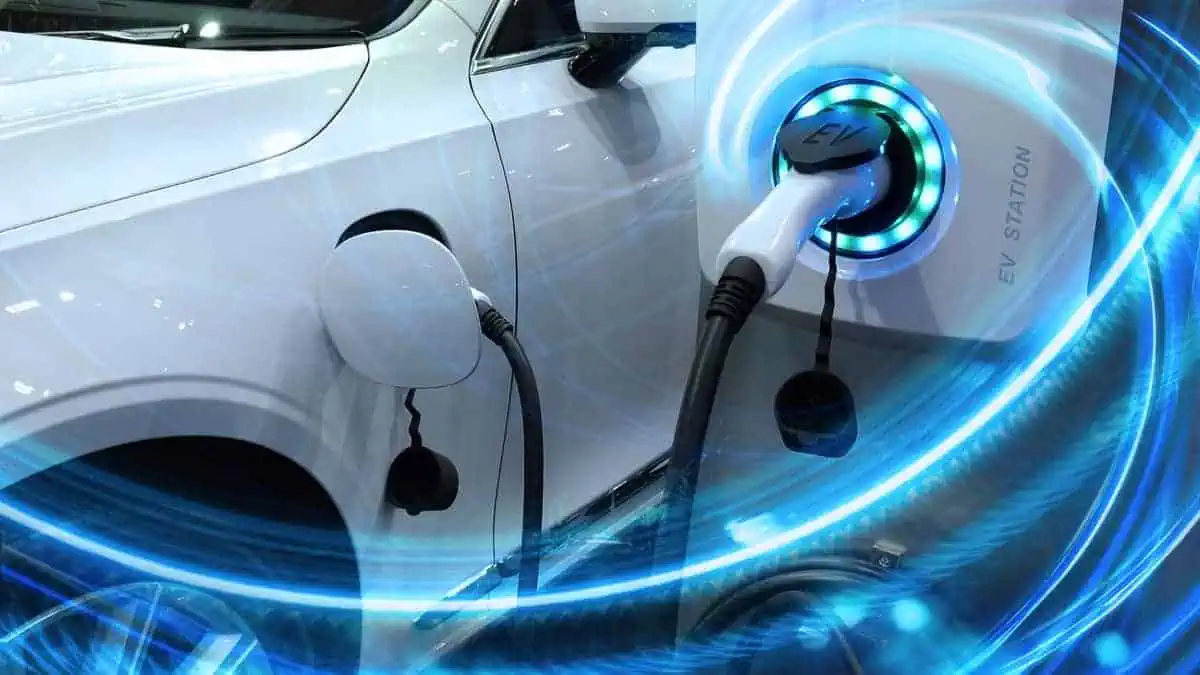Electric vehicle prices are significantly dropping nowadays compared to their early development because of major market changes. Affecting factors include increased competition, government subsidies, and falling prices for lithium and other battery materials.
That said, EVs may become as cheap or even less expensive than internal combustion engine (ICE) cars in 2023 for some mass-market models. In fact, it has already happened for some luxury vehicles. However, the decline in EV prices would not stop there. These are expected to fall further as Tesla, General Motors, Ford Motor, and their battery providers build new factories and optimize the cost savings that come with mass production.
Furthermore, new EVs from other established automakers like Volkswagen, Nissan, and Hyundai are expected to increase competition. For instance, the BEV counterpart of the Equinox crossover from General Motors will start at approximately $30,000 when it reaches the market this fall. Notably, that amount is $3,400 higher than the entry-level ICE car version. However, the all-electric Equinox would be less expensive with government subsidies. Apart from that, it will require less maintenance, and the electricity used to power it will be less costly than the gasoline consumption of its ICE car counterpart.
Used EV sales soar because of waiting lists
EV consumers previously experienced extended waiting lists and sticker prices that were thousands of dollars higher.
Interestingly, secondhand EVs are often sold for higher prices than new ones because consumers tend to compromise just to receive deliveries as soon as possible. Kelley Blue Book reported that the average cost of an EV in 2022 was $61,488, compared to $49,507 for all passenger cars and trucks.
As of now, certain models, such as the Ford F-150 Lightning pickup truck, still have waiting lists. Meanwhile, finding and purchasing new and used EVs has become easier and less expensive.
Just a month ago, EV giant Tesla significantly reduced the Model 3 and Model Y prices by thousands of dollars.
The Tesla Model 3 costs $300 less than the lowest-priced BMW 3 Series sedan, with a base price of $43,500 before government incentives. Meanwhile, the Tesla Model Y costs about the same as a comparable Lexus RX at $55,000 before tax credits.
Ford joined the trend as it also reduced the price of its Mustang Mach-E, the second-best EV in the US after Tesla cars.
Even more, Lucid Motors currently does not meet the criteria for the new federal tax credits. Nonetheless, the luxury brand is under pressure to reduce prices. This week, it began offering $7,500 discounts on vehicles starting at $107,400.
More tax credits for EV buyers
The newly passed Inflation Reduction Act offers tax credits of up to $7,500 for electric car buyers. It was a major impetus for the price drops in the EV industry.
“Tesla saw there is increasing competition, and some of the competition is quite good. If the No. 1 seller of a certain type of car reduces their prices, that will impact the average.”
Brian Moody, executive editor for Kelley Blue Book
To meet the criteria, battery-powered or plug-in hybrid sedans must sell for less than $55,000. In comparison, pickups and sport utility vehicles must sell for less than $80,000.
Ford and Tesla raised the number of models eligible for tax credits by lowering their prices.
“Manufacturers are working to continue to attract shoppers by making these vehicles eligible for tax credits.”
Jenni Newman, editor-in-chief of Cars.com
Furthermore, incentives offered to companies that produce EV batteries domestically could be more significant as part of the Biden administration’s effort to reduce foreign reliance, especially on China.
The subsidies, also included in the IRA, could reduce the cost of producing EVs by up to $9,000.
International Council on Clean Transportation, a research and advocacy group, claimed that the tax breaks and credits for electric car consumers could push BEVs to match ICE car prices as soon as 2023. Notably, that projection is three to five years later if no incentives were in place.
“If the automakers pass that on to consumers, consumers will benefit.”
Stephanie Searle, International Council on Clean Transportation’s program director
Used EV prices dropped
Used EV prices are dropping as new car prices fall. Recurrent, which tracks the used car market, claimed that they had dropped 17% since July 2022.
Notably, these significant price drops were primarily influenced by Tesla’s price cuts on the Model 3 and General Motors’ Chevrolet Bolt by nearly $6,000 last year.
Apart from that, used EVs can also apply for a tax credit of up to $4,000 under the IRA.
Critical EV battery materials such as lithium and cobalt declining costs have also caused price drops. For context, lithium prices have dropped 20% since their peak in November. However, it must be noted that the mineral still costs higher by over twofold than in late 2021.
Meanwhile, cobalt prices have dropped by more than half since May. The demand for the said mineral decreased as automakers sold models that did not require it.
Furthermore, the development of ore has started among new lithium mines, which may keep prices under control. In fact, Sigma Lithium’s CEO Ana Cabral Gardner announced that the company would start shipping raw material from a Brazilian facility to its primary customer, LG Energy Solution, as early as April 2023. Remarkably, the site will be Latin America’s first new lithium source in several years.
“It’s doable, and we’re there.”
Sigma Lithium’s CEO Ana Cabral Gardner
However, these benefits may fade due to new supply chain issues. Lithium is still in short supply, and prices may rise again.
New regulations controlling the $7,500 tax credits will implement restrictions for EV batteries to be produced in the US, Canada, or Mexico using North American or another trade partner’s raw materials in March.
Nonetheless, it is still being determined how many EVs can comply with the new standards.
The IRA tax credits are currently accessible for EVs assembled in North America, which advances US automakers’ position against foreign competitors such as Hyundai.
For instance, the popular Ioniq 5 is imported from South Korea. To qualify for the tax credits, Hyundai is constructing a factory in Georgia that will begin producing EVs in 2025. However, it must also be noted that buyers may still access an indirect tax credit if they lease foreign-made EVs.
Previously, the Mustang and lighter versions of the Model Y were categorized as sedans and were subject to the $55,000 limit. Finally, the Treasury Department, which is in charge of enforcing the IRA, categorized several popular crossovers as SUVs rather than sedans in February.
In effect, it allowed the abovementioned EVs to be eligible for tax credits with a price cap of $80,000 or less.
The amendment relieved some of the pressure on automakers to maintain low prices. Tesla quickly increased the Model Y’s price by $2,000. Meanwhile, Ford announced that it had no plans to raise the cost of Mach-E.
Many congressional Republicans also oppose the IRA. However, carmakers and battery firms are locating factories in Republican-leaning states such as South Carolina, Texas, and Tennessee. Yet, the commodity markets and Washington are not the most potent forces driving down prices.
Innovative EV market
Automakers are getting better at producing EVs as sales soared to 66 percent to 810,000 in the US last year, per Kelley Blue Book.
Ford CEO Jim Farley stated that the automaker had decreased the weight of the Mach-E by 70 pounds by removing some wiring, increasing range, and lowering costs.
Meanwhile, Ultium Cells, a joint venture between General Motors and LG Energy Solution, began producing batteries at a new plant in Ohio in 2022. The partnership aims to open a second Ultium plant in Tennessee this year, and a third is planned for Michigan.
As can be observed, EV costs generally decrease as a company produces more units. According to auto executives, designing and building new EVs is more accessible and less expensive than ICE cars.
For instance, lithium battery cells are part of a set of components that can be paired together in various vehicles. Automakers have long utilized the same platforms in various models. However, this strategy works even better with EVs, which have far lesser parts than ICE vehicles.
The Ultium platform reduces the time required to build a new vehicle by nearly two years, according to Dan Nicholson, General Motors’ electrification VP who spoke at a Federal Reserve Bank of Chicago meeting in January.
As a result, General Motors will be able to launch three Chevrolet EVs this year, including the Equinox, a Silverado pickup truck, and a Blazer SUV.
“That’s how we get economies of scale.”
General Motors’ electrification VP
EV suppliers are also seeking ways to reduce operating costs. Matthews International, based in Pittsburgh, has created a method for wrapping the metal foil that separates a battery’s positive and negative electrodes. The process employs a powder rather than a liquid solution.
According to Matthews International’s chief technology officer Greg Babe, the process needs less equipment and much less space. Interestingly, such incremental changes lower costs without requiring major technological breakthroughs.
Since President Biden approved the IRA, there has been a surge in attraction to Matthews’ approach.
“It changed almost instantly. The floodgates have been opened.”
Matthews International’s chief technology officer Greg Babe






